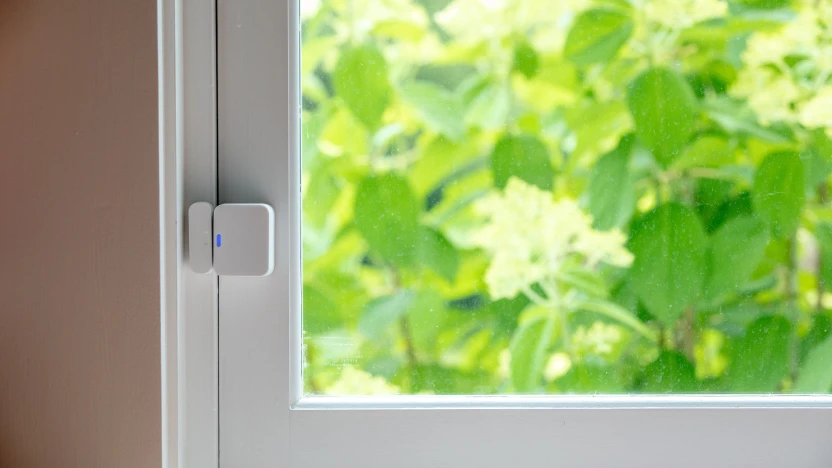A complete guide to contact sensors
Posted January 20th, 2023 by SimpliSafe

Contact sensors form a vital part of a home security system, and are one of the most effective ways to boost your property’s protection. In this complete guide, we’ll cover what contact sensors are, how they work, and most importantly, how you can use them in your home to keep your valuables and loved ones safe.
What are contact sensors?
A contact sensor is a simple yet effective home security device that’s made up of two different components - the sensor body and a magnet. They are designed to protect the entrances to your home - be it a door or a window - and will sound an alarm if someone attempts to break in. In doing this, neighbours and those nearby will be alerted to the scene, which will likely deter someone from continuing on with their crime.
How do contact sensors work?
When the door or window is closed, the sensor body and the magnet will sit next to one another, with less than two inches between them. If the entrance is opened and the two components are pulled more than two inches away from each other, this will trigger the alarm - which could indicate a break in.
How to install a SimpliSafe Entry Sensor
Keep watch over every door and window in your home with the SimpliSafe Entry Sensor. Installing this handy home security device only requires a few simple steps:
Line up the magnet and the contact sensor on your chosen door or window, ensuring that they align. Check the parts are less than two inches apart when the door or window is closed.
Check that a blue light flashes when the door or window opens, and flashes twice when closed.
Stick the sensor to the door and the magnet to the doorframe, or the other way around. Test the device to make sure that it’s working.
Where should you install contact sensors?
Thanks to the Entry Sensor's easy-to-assemble, versatile design, there are various places that it can be installed. This could include the following:
Front and back doors: As obvious entrances to the home, these are one of the best places to install a contact sensor.
Internal doors: If valuables are kept in certain rooms in your home, you might want to install a contact sensor here, too.
Attic doors: If your attic has a hatch entry, we advise you to install a contact sensor here. Certain valuables may be kept in the attic, making it a place that is commonly broken into.
Windows: If front and back doors are locked, burglars will often resort to windows instead. To prevent a break in, install contact sensors here.
Please note that SimpliSafe’s Entry Sensor should only be installed indoors to prevent water damage.
What are the other benefits of contact sensors?
Whether you’re keeping valuables safe and sound, or worried about dangerous chemicals or equipment falling into small hands, a contact sensor has many uses. As long as it’s indoors, a contact sensor can be fitted to just about anywhere.
Prevent false alarm with professional monitoring
A well-designed contact sensor is unlikely to cause false alarms, but for an additional layer of security, you can sign up to our professional monitoring plan. Our 24/7 monitoring centre will be able to investigate alarm alerts - be it morning or night - so that your home’s security isn’t compromised whilst you’re away. If they can visually verify that there has been a break in through an Indoor Camera, they will alert the local authorities immediately.
Want to find out more about what our home security packages have to offer? Contact our team today to start customising your very own. From contact sensors to security cameras, we cover all bases.